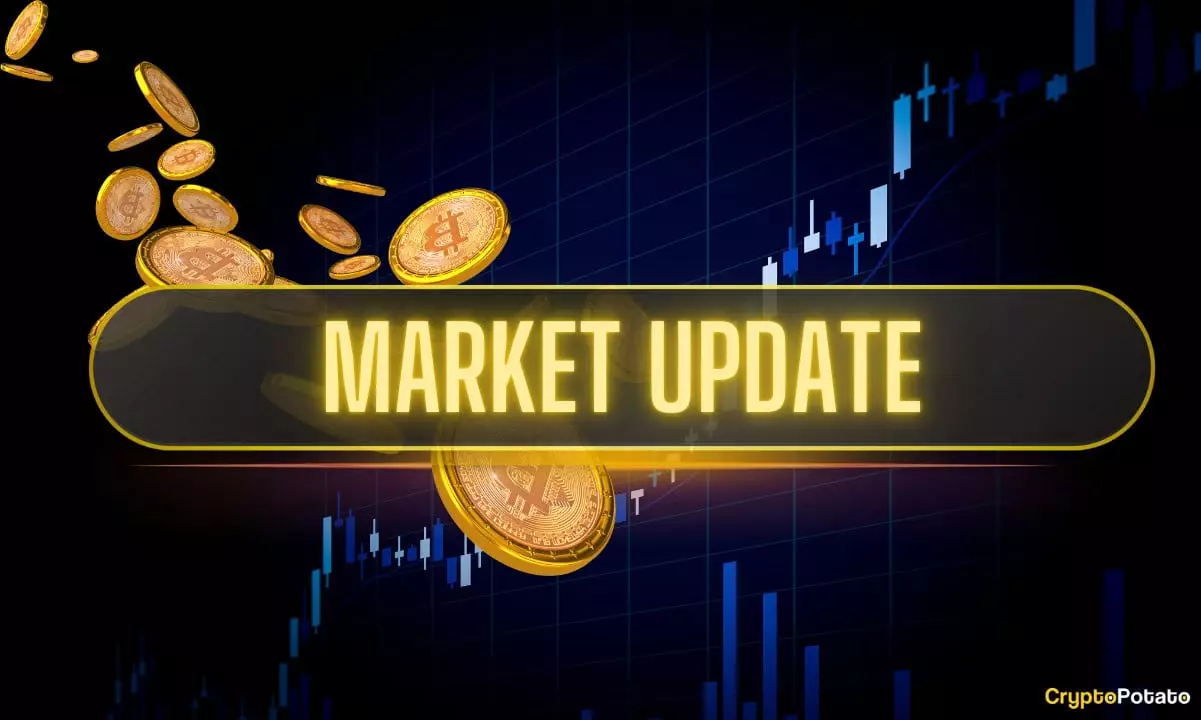This week’s cryptocurrency landscape has underscored a fundamental truth: digital assets remain as unpredictable as ever. Despite a sluggish price movement, the market buzzed with significant moves and high-stakes developments, culminating in what seems to be a battle between optimistic resilience and looming risks. While some coins enjoyed double-digit gains, Bitcoin’s chart told a story of a cautious tug-of-war driven by macroeconomic undercurrents and institutional maneuvers. It’s clear that Bitcoin, the flagship of digital currencies, is at a pivotal crossroads where its trajectory will be shaped by external economic decisions and internal market sentiment.
Bitcoin’s recent price action is emblematic of its inherent volatility, with sharp intra-week swings between $107,500 and $113,350. Such movements are symptomatic of a market in flux, reacting to the volatility of macroeconomic policies and investor sentiment shifts. Despite these fluctuations, Bitcoin maintains a slight weekly gain, a fact that might mislead many into assuming stability. But beneath this surface lies a fragile market primed for sudden turns, especially ahead of the critical Federal Open Market Committee (FOMC) meeting. Expectations of a rate cut could be the catalyst that finally ignites a more sustained upward trend, although the market remains suspiciously cautious.
Institutional Movements and Market Confidence
The involvement of large institutional players paints an intriguing picture. Notably, companies like Strategy and Metaplanet have continued to deepen their Bitcoin holdings, deploying hundreds of millions in new acquisitions. This level of institutional confidence is, on one hand, a positive indicator—signaling long-term belief in Bitcoin’s potential. On the other, massive buy-ins amid a volatile environment raise questions about market timing and underlying motives. Are these strategic purchases signaling a strong bottom? Or are they merely opportunistic moves hoping to capitalize on transient dips? In either case, their actions add weight to the narrative that Bitcoin remains a key asset in the broader financial ecosystem, even amid turmoil.
Meanwhile, the divergence in performance metrics across the crypto space highlights a broader market awkwardness. While Bitcoin’s dominance stabilizes above 56%, other cryptocurrencies like BCH and POL have posted significant gains, contrasting sharply with CRO’s sharp decline. This discrepancy suggests a market in disarray, where some assets are still riding the wave of bullish sentiment, while others stumble on macro or project-specific issues. It’s due to this disconnect that investors should approach the current rally with skepticism and remain vigilant against overconfidence based solely on short-term gains.
The Macroeconomic Calendar and Its Market Implications
The upcoming FOMC meeting is perhaps the most significant event on the horizon. Anticipation is high that the Federal Reserve will finally reduce interest rates—a move that historically favors risk-on assets like Bitcoin. Yet, the market’s reaction will depend heavily on how dovish or hawkish the Fed’s tone will be. A rate cut could ignite a bullish wave, pushing Bitcoin toward new highs; however, if the Fed signals caution or inflation concerns persist, the entire crypto market might face renewed headwinds.
Furthermore, institutional buy-ins and emerging regulatory cooperation suggest a landscape where Bitcoin, in particular, could benefit from a more stabilized environment. The joint statement from US regulators signals a shift toward clearer, perhaps more permissive, regulation—probably a necessary step for mainstream acceptance. Combined with the Trump family’s debut of American Bitcoin on Nasdaq, it’s undeniable that the digital currency realm is slowly inching toward legitimacy. But legitimacy alone won’t guarantee immunity from volatility or intervention; these factors will only clarify the investment landscape and possibly attract more cautious investors.
Market Sentiment and Future Outlook
Analysts are divided over Bitcoin’s near-term future, with some predicting the end of its current bull cycle in as little as 50 days, while others fret about the long-term risks ahead. This divergence underscores a broader truth: the market is fragile, driven by external macroeconomics as much as internal technicals. The possibility of a new bullish run fueled by institutional confidence and macroeconomic easing is enticing, but it demands skepticism in a climate rife with uncertainty.
Overall, Bitcoin’s resilience amidst turbulence reflects its complex nature—a resilient but imperfect hedge against macroeconomic instability. Its ability to bounce back from lows, coupled with institutional backing and regulatory clarity, indicates it remains central to the global financial conversation. Yet, the upcoming months will be decisive; a misstep or misinterpretation could lead to swift declines or stalled gains. In this environment of cautious optimism, investors and traders must remain critically aware of the risks, never surrendering to complacency, and recognizing that Bitcoin’s true strength lies in its volatility—an asset that can just as easily devastate as it can deliver.

